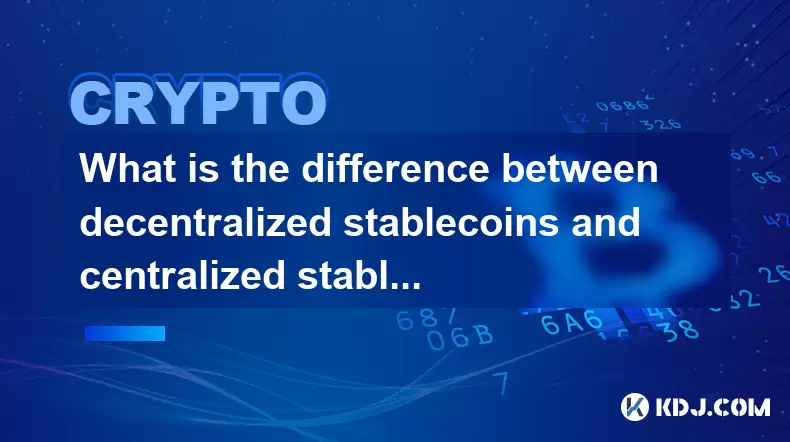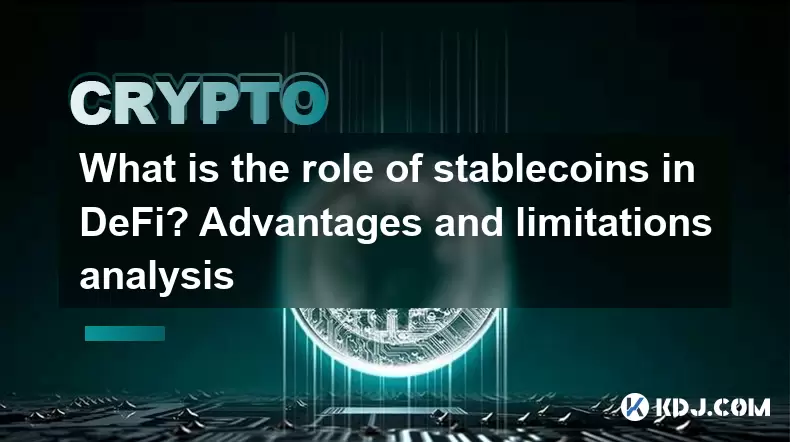-
 Bitcoin
Bitcoin $117500
2.04% -
 Ethereum
Ethereum $3759
3.02% -
 XRP
XRP $3.171
3.30% -
 Tether USDt
Tether USDt $1.000
0.03% -
 BNB
BNB $782.4
2.52% -
 Solana
Solana $187.2
5.62% -
 USDC
USDC $0.0000
0.02% -
 Dogecoin
Dogecoin $0.2380
5.26% -
 TRON
TRON $0.3175
1.07% -
 Cardano
Cardano $0.8227
4.03% -
 Hyperliquid
Hyperliquid $44.50
5.44% -
 Sui
Sui $4.020
10.07% -
 Stellar
Stellar $0.4396
6.28% -
 Chainlink
Chainlink $18.32
4.55% -
 Hedera
Hedera $0.2628
10.71% -
 Bitcoin Cash
Bitcoin Cash $554.8
4.90% -
 Avalanche
Avalanche $24.20
4.60% -
 Litecoin
Litecoin $113.7
2.31% -
 Shiba Inu
Shiba Inu $0.00001413
5.99% -
 UNUS SED LEO
UNUS SED LEO $8.984
0.11% -
 Toncoin
Toncoin $3.326
7.22% -
 Ethena USDe
Ethena USDe $1.001
0.00% -
 Uniswap
Uniswap $10.49
4.56% -
 Polkadot
Polkadot $4.092
4.02% -
 Monero
Monero $326.6
1.30% -
 Dai
Dai $1.000
-0.01% -
 Bitget Token
Bitget Token $4.570
2.49% -
 Pepe
Pepe $0.00001267
5.10% -
 Aave
Aave $297.3
3.10% -
 Cronos
Cronos $0.1344
4.10%
What is the operating mechanism of stablecoins? In-depth exploration of its stability principle
Stablecoins aim to combine blockchain benefits with stable value, using collateral or algorithms to maintain price stability.
Jun 10, 2025 at 09:28 pm

Understanding the Core Concept of Stablecoins
Stablecoins are a unique category within the cryptocurrency market, designed to address one of the most significant drawbacks of traditional cryptocurrencies: price volatility. Unlike Bitcoin or Ethereum, which can experience dramatic price swings in short periods, stablecoins aim to maintain a stable value relative to a specific asset or basket of assets.
Most commonly, stablecoins are pegged to fiat currencies such as the US Dollar (USD), but some are tied to commodities like gold or even other cryptocurrencies. The fundamental idea behind stablecoins is to combine the benefits of blockchain technology — including fast transactions, transparency, and decentralization — with the stability of traditional financial instruments.
This foundational understanding is essential before diving into how these digital assets actually maintain their value.
Collateralized Stablecoins: Fiat-Backed Mechanisms
One of the primary mechanisms used by stablecoins to ensure stability is collateralization, where each issued coin is backed by an equivalent reserve of the asset it's pegged to. For example, Tether (USDT) and USD Coin (USDC) are two well-known stablecoins that operate under this model.
In this system:
- A user deposits a certain amount of USD into a reserve managed by the issuing company.
- An equivalent amount of stablecoins is minted on the blockchain.
- These coins can be redeemed at any time for the underlying fiat currency.
To ensure trust, these reserves are often subject to periodic audits. However, the degree of transparency and third-party verification varies among different stablecoin issuers.
The strength of this mechanism lies in its simplicity and direct correlation between digital tokens and real-world assets.
Algorithmic Stablecoins: Maintaining Stability Through Code
Not all stablecoins rely on physical collateral. Some use algorithmic methods to control supply and demand dynamically, thereby maintaining price stability. These systems are more complex and often involve smart contracts that automatically adjust the number of circulating tokens based on market conditions.
An example is the basis cash model, where three types of tokens interact:
- The main stablecoin itself, intended to stay pegged to $1.
- Bond tokens, which allow users to purchase discounted bonds when the price drops below $1, incentivizing price recovery.
- Share tokens, which entitle holders to excess profits when the price rises above $1, encouraging selling pressure to bring the price back down.
While algorithmic stablecoins eliminate the need for centralized reserves, they face challenges related to market confidence and liquidity, especially during periods of extreme volatility.
Their reliance on market behavior and code execution makes them both innovative and potentially risky.
Over-Collateralized Cryptocurrency-Backed Stablecoins
Another approach involves backing stablecoins with other cryptocurrencies, but due to their volatility, these systems require over-collateralization to absorb price fluctuations. A prime example is Dai, issued by the MakerDAO platform.
Here’s how it works:
- Users lock up a volatile cryptocurrency like ETH as collateral in a smart contract.
- They can then generate Dai tokens up to a certain percentage of the locked value (e.g., 150%).
- If the value of the collateral drops too low, the position is liquidated to protect the system's solvency.
This decentralized model removes the need for trust in a central issuer but introduces complexities around liquidation risks and collateral management.
It balances decentralization with risk mitigation through strict collateral requirements and automated enforcement.
The Role of Arbitrage in Maintaining Peg Stability
A key factor in the functioning of stablecoins — regardless of their design — is arbitrage. When the market price of a stablecoin deviates from its peg, arbitrageurs step in to profit from the discrepancy, which naturally brings the price back in line.
For instance:
- If a stablecoin trades below $1, arbitrageurs buy it cheaply and redeem it for $1 worth of the underlying asset.
- If it trades above $1, they sell newly minted coins into the market until the price stabilizes.
This self-correcting mechanism is crucial for long-term stability and is built into many stablecoin ecosystems, either directly or indirectly.
Arbitrage ensures that temporary deviations from the peg are corrected quickly, reinforcing overall system resilience.
Frequently Asked Questions
Q: Are all stablecoins backed by actual reserves?
No, not all stablecoins are backed by physical reserves. While some, like USDT and USDC, claim to hold fiat reserves, others rely on algorithms or over-collateralized crypto assets instead.
Q: Can stablecoins lose their peg permanently?
Yes, although rare, stablecoins have lost their peg in the past due to lack of reserves, market panic, or flaws in the algorithmic design. This underscores the importance of transparency and sound economic models.
Q: How do I verify if a stablecoin is truly backed?
You can check audit reports published by the issuing entity or look for third-party attestations. Independent platforms and regulators sometimes conduct reviews to assess reserve adequacy.
Q: Is holding stablecoins safer than holding other cryptocurrencies?
Generally, yes, because stablecoins are designed to minimize price volatility. However, risks such as counterparty failure, regulatory changes, or systemic collapse in algorithmic models still exist.
Disclaimer:info@kdj.com
The information provided is not trading advice. kdj.com does not assume any responsibility for any investments made based on the information provided in this article. Cryptocurrencies are highly volatile and it is highly recommended that you invest with caution after thorough research!
If you believe that the content used on this website infringes your copyright, please contact us immediately (info@kdj.com) and we will delete it promptly.
- XRP Price Swings, Unilabs Listing Heats Up, and Utility Coins Take Center Stage: What's the Buzz?
- 2025-07-26 23:30:12
- Ethereum Meme Coins: Can Punisher Coin Deliver 55x Gains?
- 2025-07-26 22:50:12
- DIA, Web3, and the AI Hype: Riding the Crypto Wave
- 2025-07-26 22:50:12
- Stablecoin Growth on Wall Street: Analyst Views and the GENIUS Act Effect
- 2025-07-26 23:30:12
- Mantra OM in 2025: Will the Future Forgive the Past?
- 2025-07-26 22:30:12
- Ancient Bitcoin Awakening: Sell-Side Pressure Looms? Crypto Analytics Weigh In
- 2025-07-26 22:30:12
Related knowledge

What is the difference between decentralized stablecoins and centralized stablecoins? Pros and cons comparison
Jun 15,2025 at 09:42am
What Are Stablecoins and Why Do They Matter?Stablecoins are a category of cryptocurrencies designed to maintain a stable value, usually pegged to an e...

What is the role of stablecoins in DeFi? Advantages and limitations analysis
Jun 14,2025 at 06:28am
Understanding Stablecoins in the DeFi EcosystemStablecoins play a pivotal role in the decentralized finance (DeFi) landscape by providing a bridge bet...

How do algorithmic stablecoins work? Potential risks and market impact
Jun 12,2025 at 02:07pm
Understanding Algorithmic StablecoinsAlgorithmic stablecoins are a type of cryptocurrency designed to maintain a stable value relative to a specific a...

How do stablecoins anchor legal currencies? Technical and economic model analysis
Jun 16,2025 at 08:43am
Understanding the Concept of StablecoinsStablecoins are a category of cryptocurrencies designed to maintain a stable value relative to a specific asse...

How do stablecoins maintain price stability? Principles and risk analysis
Jun 11,2025 at 12:01am
Understanding the Mechanisms Behind Stablecoin StabilityStablecoins are a category of cryptocurrencies designed to minimize price volatility, often pe...

What is the operating mechanism of stablecoins? In-depth exploration of its stability principle
Jun 10,2025 at 09:28pm
Understanding the Core Concept of StablecoinsStablecoins are a unique category within the cryptocurrency market, designed to address one of the most s...

What is the difference between decentralized stablecoins and centralized stablecoins? Pros and cons comparison
Jun 15,2025 at 09:42am
What Are Stablecoins and Why Do They Matter?Stablecoins are a category of cryptocurrencies designed to maintain a stable value, usually pegged to an e...

What is the role of stablecoins in DeFi? Advantages and limitations analysis
Jun 14,2025 at 06:28am
Understanding Stablecoins in the DeFi EcosystemStablecoins play a pivotal role in the decentralized finance (DeFi) landscape by providing a bridge bet...

How do algorithmic stablecoins work? Potential risks and market impact
Jun 12,2025 at 02:07pm
Understanding Algorithmic StablecoinsAlgorithmic stablecoins are a type of cryptocurrency designed to maintain a stable value relative to a specific a...

How do stablecoins anchor legal currencies? Technical and economic model analysis
Jun 16,2025 at 08:43am
Understanding the Concept of StablecoinsStablecoins are a category of cryptocurrencies designed to maintain a stable value relative to a specific asse...

How do stablecoins maintain price stability? Principles and risk analysis
Jun 11,2025 at 12:01am
Understanding the Mechanisms Behind Stablecoin StabilityStablecoins are a category of cryptocurrencies designed to minimize price volatility, often pe...

What is the operating mechanism of stablecoins? In-depth exploration of its stability principle
Jun 10,2025 at 09:28pm
Understanding the Core Concept of StablecoinsStablecoins are a unique category within the cryptocurrency market, designed to address one of the most s...
See all articles

























































































